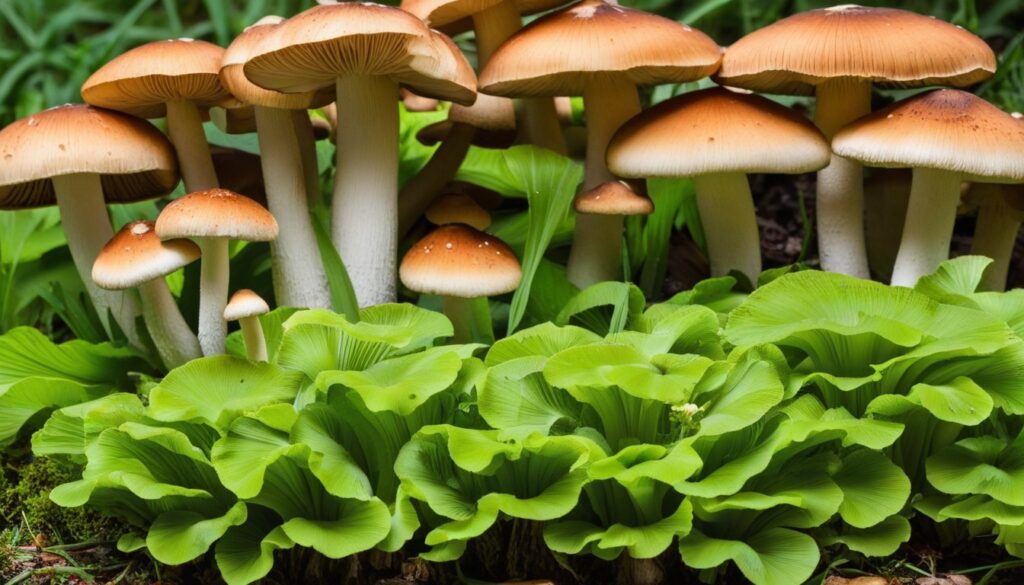Are you ready to add some seasonal flair to your cooking? Look no further than ramps and mushrooms, two delicious ingredients that bring earthy and unique flavors to your dishes. From foraging ramps to exploring different types of mushrooms, this article will provide you with all the information you need to make the most out of these ingredients and create mouthwatering spring dishes.
Key Takeaways:
- Ramps and mushrooms are versatile and flavorful ingredients that add depth and richness to dishes.
- Foraging ramps and harvesting mushrooms can be exciting activities for food lovers and nature enthusiasts.
- Different types of mushrooms offer a range of distinct flavors and textures that can enhance a variety of dishes.
- Pairing ramps and mushrooms together can create a magical culinary experience that showcases the best of these seasonal ingredients.
- Ramps and mushrooms not only taste delicious but also offer a range of potential health benefits to those who consume them.
The Seasonal Beauty of Ramps
Spring brings not only warmer weather but also an abundance of seasonal ramps, also known as wild leeks. These tender shoots have a unique earthy and garlic-like flavor that can add depth to various dishes.
Foraging ramps is a popular activity among food enthusiasts, and it’s essential to do so responsibly. Look for patches of ramps in woodland areas with rich soil and high humidity. These wild herbs are notorious for their short season and slow-to-recover growth habits, so avoid over-harvesting.
The Unique Characteristics of Ramps
|
Characteristics |
Details |
|---|---|
|
Flavor |
Intensely pungent; a combination of garlic, onion, and leeks. |
|
Appearance |
Bright green, broad leaves, and slender bulbs. |
|
Seasonal Availability |
Usually from March to May in North America, before other crops are ready. |
|
Nutrition |
Low in calories but high in vitamins A, B, and C, and minerals such as iron and calcium. |
|
Make sure you are allowed to forage in the area, ask permission if necessary, and don’t remove more than 10% of the ramp patch. |
Ramps are versatile ingredients that pair well with eggs, pasta, potatoes, and meat. Use them in salads, omelets, and soups for an extra boost of flavor, or cook them briefly in butter or olive oil to bring out their unique aroma.
Next, explore a range of recipes that highlight the delicious and unique flavors of ramps in Section 3: Cooking with Ramps: Flavorful Ideas.
Cooking with Ramps: Flavorful Ideas
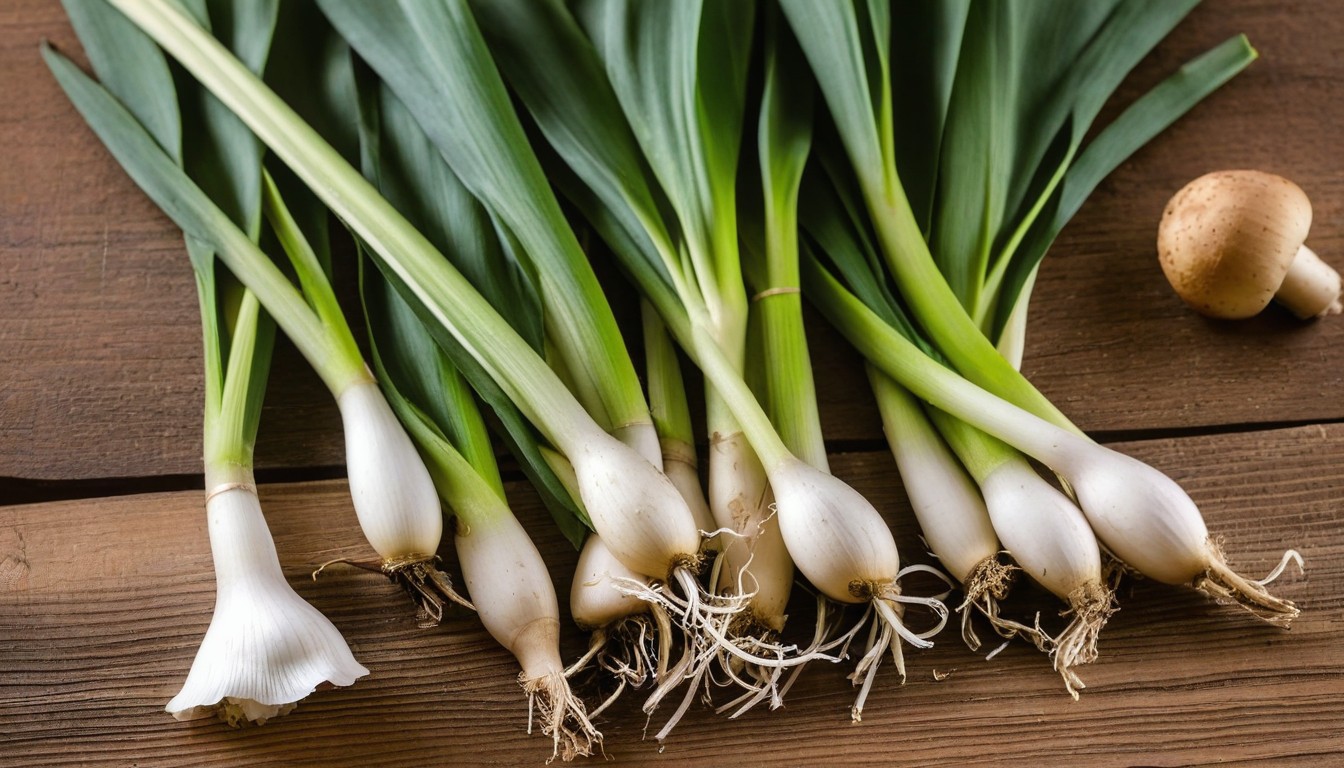
Get ready to tickle your taste buds with these mouthwatering ramp recipes! Ramps’ unique taste is perfect for adding depth to various dishes. Try them sautéed, pickled, grilled, or raw, and explore their mild, onion-like flavor with these tantalizing ramp recipes.
Ramp Pesto
Bring a fresh twist to classic pesto by substituting basil with ramps. Whizz up a bunch of ramps, walnuts, olive oil, lemon juice, and Parmesan cheese in a food processor, and voilà! You have a garlicky, nutty ramp pesto that is perfect for tossing with pasta, spreading on sandwiches, or as a dip.
Ramp Tart
This ramp tart is as delicious as it is beautiful! Coarsely chop ramps and place on top of a puff pastry sheet; sprinkle some goat cheese and bake until golden brown and crispy. Top with some black pepper and chopped chives, and you have a show-stopping dish that is perfect for brunch or lunch.
Ramp Carbonara
Upgrade your classic carbonara recipe with the addition of ramps. Simply sauté chopped ramps with bacon and garlic, toss with hot spaghetti, egg yolks, and Parmesan cheese, and you have a comforting yet sophisticated dish that your family and friends will rave about.
|
Ramp Recipes |
Ramp Recipes |
|---|---|
|
Ramp and Mushroom Quiche |
Ramp Frittata |
|
Ramp Risotto |
Ramp and Potato Soup |
|
Ramp Butter |
Ramp and Goat Cheese Crostini |
These are just a few of the numerous recipes that transform ramps into culinary delights. Ramps add flavor and depth to soups, salads, pasta, spreads, and numerous other dishes. Don’t be afraid to get creative in the kitchen and experiment with ramps. Elevate your dishes this season with the magical taste of ramps!
Types of Mushrooms: A Guide
When it comes to edible mushrooms, there’s an exciting array of varieties to choose from, each with its unique flavor, aroma, and texture. Whether you’re a mushroom enthusiast or simply love to cook with them, this guide will introduce you to some of the most popular types of mushrooms to elevate your dishes.
|
Mushroom Variety |
Flavor Profile |
Best Uses |
|---|---|---|
|
Shiitake Mushrooms |
Earthy, subtly sweet, and nutty |
Stir-fries, soups, stews, and salads |
|
Deliacte, mildly sweet, and nutty |
Pizzas, pastas, risottos, and stir-fries | |
|
Meaty, robust, and slightly sweet |
Grilled, roasted, stuffed, and used as burger patties | |
|
Fruity, slightly peppery, and earthy |
Sauteed, roasted, and used in creamy sauces | |
|
Enoki Mushrooms |
Mild, slightly crunchy, with a hint of sweetness |
Salads, soups, and stir-fries |
These mushrooms are versatile ingredients that can add depth, umami, and nutrition to your dishes. As you explore the world of mushrooms, don’t be afraid to experiment with unique or lesser-known varieties to expand your culinary horizons.
Harvesting Mushrooms: Tips and Techniques
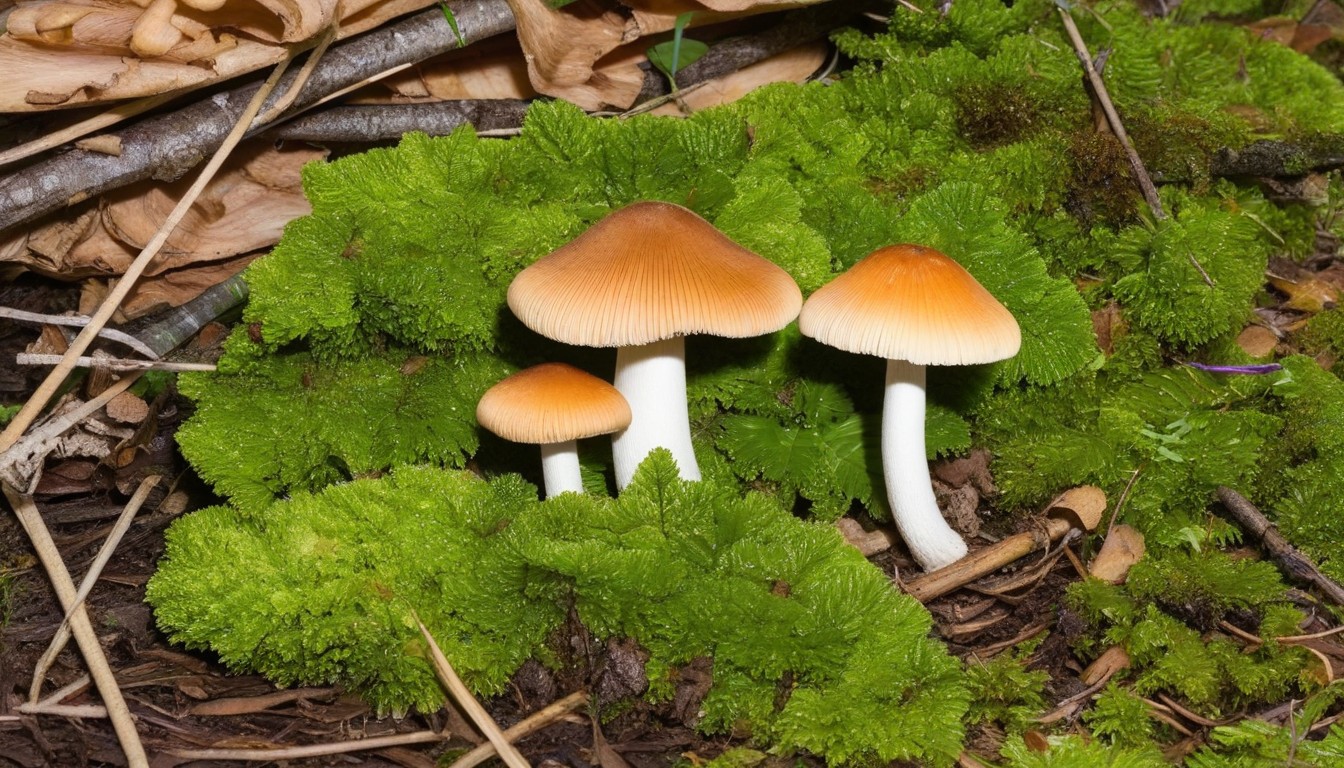
Foraging for wild mushrooms can be a fun and rewarding experience, but it’s essential to proceed with caution. Many varieties of wild mushrooms are toxic, so it’s vital to learn how to identify edible species properly.
Best Time and Place to Find Mushrooms
The best time to find wild mushrooms is during the fall and spring seasons, when moisture levels are high. An excellent place to start is in wooded areas, near decaying logs or under trees.
Guidelines for Mushroom Identification
When foraging for mushrooms, you should use the following guidelines:
- Only harvest mushrooms that are well-formed and free from deformities.
- Make sure the cap and stem are attached, with no signs of separation.
- Avoid mushrooms that have a slimy or mushy texture, as they could be a sign of decay or a poisonous variety.
- If you’re unsure about a mushroom’s identity, don’t consume it.
- Carry a mushroom identification guidebook with you, or consult with an expert to confirm your identification.
Sustainable Harvesting Practices
It’s essential to engage in sustainable harvesting practices to ensure the continued growth and development of the mushroom ecosystem. When harvesting, you should:
- Only take a small fraction of mushrooms visible in one area
- Scatter spores after harvesting to encourage further growth
- Avoid damaging the surrounding area and other existing mushrooms
- Never pull or uproot mushrooms – always cut close to the base with a sharp knife.
Remember, always cook wild mushrooms thoroughly before eating, and never consume mushrooms that you’re unsure about – it’s better to be safe than sorry!
Mushrooms in Cooking: Beyond the Basics
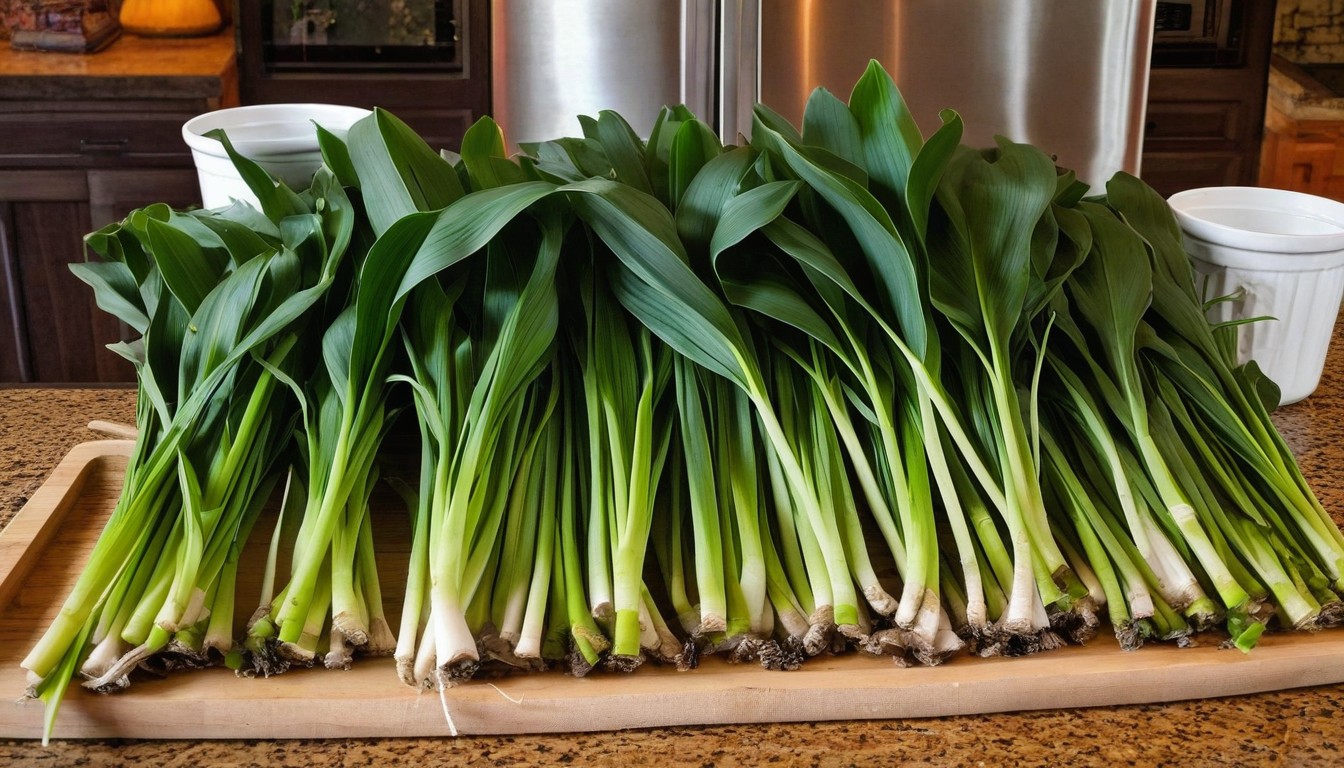
Are you ready to take your mushroom dishes to the next level? Cooking with mushrooms is more than just sautéing them in butter. With their earthy and rich flavor, mushrooms can be a versatile and delicious ingredient in a variety of dishes. Check out these unique ideas for cooking with mushrooms:
Mushroom Stuffing
Stuffed mushrooms are a classic appetizer that can also make a filling main dish. You can stuff mushrooms with a variety of ingredients, from sausage and cheese to quinoa and veggies. Experiment with different flavors and textures to find the perfect combination for your taste buds.
Mushroom Risotto
Risotto is a creamy and fulfilling dish that can be flavored with a variety of ingredients, including mushrooms. The key to a good mushroom risotto is to use a flavorful broth and to sauté the mushrooms before adding them to the rice. Top the dish with some fresh herbs and parmesan cheese for a burst of flavor.
Mushroom Soup
Mushrooms can add a rich depth of flavor to soups. Mushroom soup can be made with a variety of mushroom types, from shiitake to portobello. Add some cream or coconut milk for a silky texture, and top with chopped fresh herbs for a pop of color.
Mushroom and Vegetable Skewers
Grilled mushroom and vegetable skewers are a great way to add some flavor and color to your barbecue. Marinade the vegetables and mushrooms in a flavorful vinaigrette before grilling for maximum taste.
Mushroom Pairing
Mushrooms pair well with a variety of other ingredients, including meats, cheeses, and grains. Some classic combos include mushroom and beef, mushroom and blue cheese, and mushroom and barley. Experiment with different pairings to find the perfect match for your next meal.
Ramps and Mushrooms: A Flavorful Combination
Spring flavors come alive with the incredible pairing of ramps and mushrooms. These two seasonal ingredients complement each other’s distinct flavors and textures, making them a popular choice in countless recipes. Here are some delicious ideas for incorporating ramps and mushrooms into your next culinary creation:
|
Ramps and Mushroom Recipes |
Pairing Suggestions |
|---|---|
|
Ramp and Mushroom Risotto Mushroom and Ramp Quiche Ramp and Mushroom Pizza |
|
|
Mushroom and Ramp Omelet Ramp and Mushroom Tart Mushroom and Ramp Stir Fry |
|
These recipes are just a few examples of how ramps and mushrooms can come together to create a dish that is sure to impress. The versatile nature of these ingredients makes them perfect for experimenting with different types of cuisines and flavor combinations. Enjoy the beauty of spring with these savory and delicious recipes!
Preserving Ramps and Mushrooms: Tips and Techniques
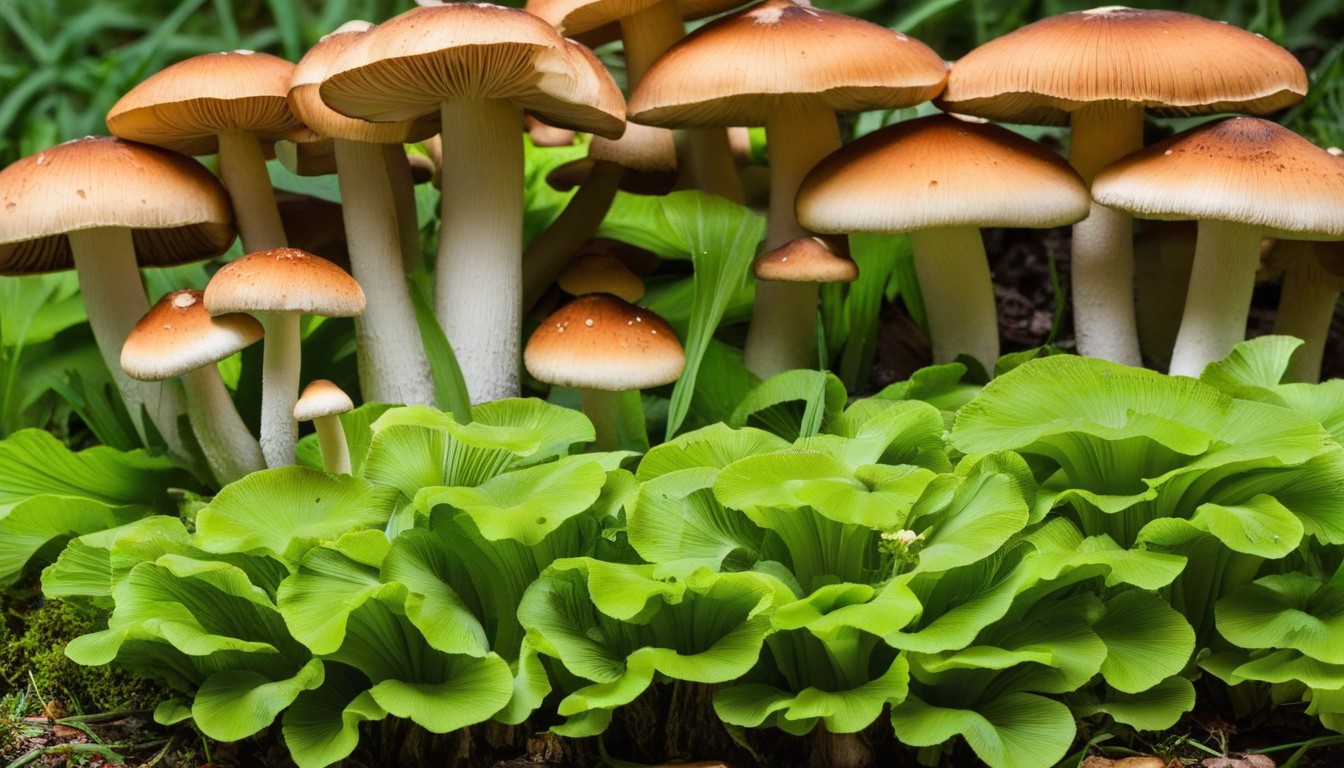
Preserving ramps and mushrooms can help prolong their shelf life and allow you to enjoy these tasty ingredients even when they’re out of season. Here are some handy preservation methods:
Preserving Ramps
When it comes to preserving ramps, pickling is a popular method that allows you to savor their unique flavor year-round.
|
Pickled Ramps Recipe |
|---|
|
Ingredients: |
|
– One pound of ramps, cleaned |
|
– One cup of apple cider vinegar |
|
– Half a cup of water |
|
– Half a cup of sugar |
|
– One teaspoon of salt |
|
– Half a teaspoon of black peppercorns |
|
– Half a teaspoon of mustard seeds |
|
– Half a teaspoon of coriander seeds |
|
Instructions: |
|
1. Bring the vinegar, water, sugar, salt, black peppercorns, mustard seeds, and coriander seeds to a boil in a pot. |
|
2. Once the sugar and salt are dissolved, add the ramps and cook for 1-2 minutes until they soften. |
|
3. Allow the ramps and pickling liquid to cool to room temperature. |
|
4. Transfer the ramps and liquid into a sterilized jar and refrigerate for at least 24 hours before serving. |
Preserving Mushrooms
When it comes to preserving mushrooms, drying is a popular method that intensifies their flavor and helps them last longer. Here’s how to do it:
- Clean the mushrooms and slice them into even pieces.
- Spread them out onto a baking sheet lined with parchment paper.
- Preheat your oven to 150°F (66°C) and bake the mushrooms for several hours, or until they are completely dry and brittle.
- Store the dried mushrooms in an airtight container in a cool, dry place.
Another popular method for preserving mushrooms is freezing. Simply clean and slice the mushrooms and freeze them in an airtight container for up to 6 months.
Now that you know how to preserve ramps and mushrooms, you can enjoy these ingredients for longer and experiment with new dishes throughout the year.
Ramps and Mushrooms: Health Benefits
Not only are ramps and mushrooms delicious additions to your meals, but they also offer a range of health benefits. Ramps are a great source of vitamin C, which can help to boost your immune system and protect against infections. Additionally, ramps contain antioxidants such as quercetin, which may have anti-inflammatory effects in the body.
Mushrooms are also a nutritious ingredient, as they are rich in vitamins and minerals such as potassium, B vitamins, and vitamin D. They may also have immune-boosting properties, thanks to compounds like beta-glucans and ergothioneine.
|
Ingredient |
Health Benefits |
|---|---|
|
Ramps |
High in vitamin C, antioxidants like quercetin, and potential anti-inflammatory effects |
|
Mushrooms |
Rich in vitamins and minerals, immune-boosting compounds such as beta-glucans and ergothioneine |
By incorporating ramps and mushrooms into your meals, you can not only add delicious flavors but also benefit from their nutritious properties. Try out recipes that feature these ingredients and discover the health benefits for yourself.
Exploring Cultural Uses of Ramps and Mushrooms
Ramps and mushrooms have been used in traditional cuisines around the world for their distinct flavors and health benefits. Let’s take a closer look at how different cultures utilize these ingredients in their culinary practices.
Japanese Cuisine: Shiitake Mushrooms
Shiitake mushrooms are a staple in Japanese cuisine. They are often used in soups, stir-fries, and steamed dishes. The Umami flavor of shiitake mushrooms pairs well with foods like miso soup and ramen.
Italian Cuisine: Porcini Mushrooms
Porcini mushrooms are commonly used in Italian cuisine, often found in pasta dishes, risottos and soups. Porcini mushrooms have a bold, nutty flavor that complements well with creamy sauces and cheese.
American Southern Cuisine: Ramps
In the Southern United States, ramps are a popular ingredient often found in dishes like ramp pesto and pickled ramps. They are also used as a flavoring in fried chicken and cornbread to add a unique taste of spring.
Korean Cuisine: Enoki Mushrooms
Enoki mushrooms are frequently consumed in Korean cuisine, eaten in stews, soups, and salads. The texture of enoki mushrooms is soft and delicate, and they have a mild, earthy taste that goes with spicy and savory dishes.
Swiss Cuisine: Morel Mushrooms
Morel mushrooms are a longstanding staple in Swiss cuisine and are often found in dishes like ragout and fondue. They have a distinct nutty and earthy flavor that works well with rich and gamey dishes.
By exploring cultural uses of ramps and mushrooms, you can discover new flavors and ingredients that add diversity to your cooking. Be adventurous and try incorporating these seasonal ingredients into your next meal!
Conclusion
Ramps and mushrooms are delightful seasonal ingredients that offer a range of flavorful and nutritional possibilities. Whether you prefer foraging ramps or picking up mushrooms from your local farmer’s market, there are endless ways to incorporate these ingredients into your dishes.
From sautéed ramps to mushroom risotto, and everything in between, you can explore a world of culinary creativity with ramps and mushrooms. These ingredients also hold cultural significance in various cuisines, adding a unique touch to your meals.
Don’t forget, if you want to enjoy ramps and mushrooms year-round, you can use preservation methods such as pickling and drying. And let’s not overlook the potential health benefits of these ingredients, which may offer immune-boosting, antioxidant, and anti-inflammatory properties.
So, embrace the earthy flavors of ramps and mushrooms, and elevate your cooking adventures with these versatile gems. Bon appétit!
FAQ
What are ramps?
Ramps, also known as wild leeks, are a type of spring onion with a unique flavor profile. They have a pungent garlic-like taste with a hint of onion.
Where can I find ramps?
Ramps can be found in the wild or purchased at farmers’ markets during their seasonal peak, typically in the spring.
Are ramps and wild leeks the same thing?
Yes, ramps and wild leeks are different names for the same plant. They are an edible, wild-growing vegetable that grows in wooded areas with rich, moist soil.
How do I forage ramps responsibly?
When foraging ramps, it’s important to only take what you need and leave enough behind for the plant to regenerate. Avoid overharvesting and be mindful of the local ecosystem.
What are some popular ramp recipes?
Some popular ramp recipes include ramp pesto, sautéed ramps, ramp and potato soup, and ramp butter. These recipes showcase the unique flavor of ramps and can be a delicious addition to your meals.
What are the different types of mushrooms?
There are various types of mushrooms used in cooking, including shiitake, oyster, portobello, cremini, and chanterelle mushrooms. Each type has its own distinct flavor and texture.
Can I forage for wild mushrooms?
Foraging for mushrooms can be done, but it requires knowledge and caution. It’s essential to accurately identify mushrooms before consuming them to avoid any potential risks.
What are some delicious mushroom recipes?
Some delicious mushroom recipes include mushroom risotto, stuffed mushrooms, mushroom pasta, and mushroom stir-fry. These recipes highlight the earthy, umami flavors of mushrooms.
Are there any health benefits to eating ramps and mushrooms?
Ramps and mushrooms both offer health benefits. Ramps are rich in vitamins A and C, while mushrooms are a good source of protein, fiber, and various minerals.
How can I preserve ramps and mushrooms?
Ramps can be preserved by pickling them or freezing them, while mushrooms can be dried or preserved in oil. These methods allow you to enjoy ramps and mushrooms beyond their seasonal availability.
How are ramps and mushrooms used in different cuisines?
Ramps and mushrooms are used in various cuisines around the world. Ramps are often featured in traditional dishes in Appalachian and French cuisine, while mushrooms are prevalent in Asian, Italian, and Mediterranean cooking.

